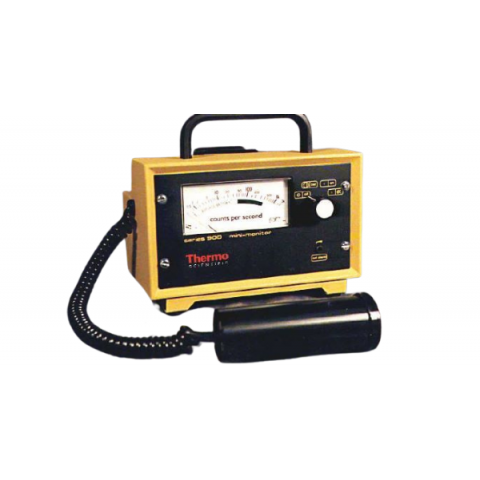Reliability And Easy Calibration - 900 Series Mini Monitors
The Mini Instruments or Mini Monitors Radiation Detectors were first manufactured in Essex UK in 1963 and became a bench mark of accurate, reliable and easy to calibrate radiation detection instruments.
Since the acquisition of Mini Instruments by Thermo Scientific in 2007 these instruments have continued to be manufactured, and while new instruments such as the RadEye Series are gaining popularity, some users prefer the simplicity of the Mini 900 Series radiation monitors.
The Mini monitor is wisely used in teaching, research, hospital and industrial laboratories as a reliable, convenient, and inexpensive radiation contamination monitor.
The instrument has a large logarithmically scaled meter with an open scale at the lower end to show background levels of radiation while displaying high levels without switching. There is also a speaker to give an audible estimation of radiation intensity. An alarm can be set to trip at any level on the scale. The unit can be battery or mains operated.
The most popular versions have are:
Mini 900 Type E General Purpose Radiation Monitor
This is a general purpose monitor that uses a thin end window Geiger Muller tube. It is suitable for the monitoring of soft beta emitters. Under certain conditions surface beta and gamma dose rates may be estimated. The probe is supplied with a protective grille and plastic end cap.
Mini 900 EP15 General Purpose Radiation Monitor
This instrument uses a large end window halogen quenched Geiger Muller tube. It is twice as sensitive as the Type E instrument, it uses a lower scale limit than the standard Type E version and is recommended for measuring the lower limits of soft beta emitters. The window is protected by a stainless steel grille and removable plastic cap.
The other versions in the range include: the Type SL which uses a side window GM tube, and the EP15F which is a ruggedized version of the EP15.
These models can be purchased from. ADM Nuclear Technologies. What's more - they can all be serviced and calibrated by ADM.
Geiger counters are used to detect ionizing radiation, usually alpha and beta radiation, but other types of radiation as well. The sensor is a Geiger-Müller tube, a gas-filled tube (usually helium, neon or argon with halogens added) that briefly conducts electricity when a particle or photon of radiation temporarily makes the gas conductive. The tube amplifies this conduction by a cascade effect and outputs a current pulse, which is indicated by a needle or lamp and/or audible clicks. Modern instruments can report radioactivity over several orders of magnitude.
To find out more contact ADM Nuclear Technologies.
IS THIS INFORMATION USEFUL?
If so, why not share it with your peers and colleagues. Simply click on the blue LinkedIn share icon below.

